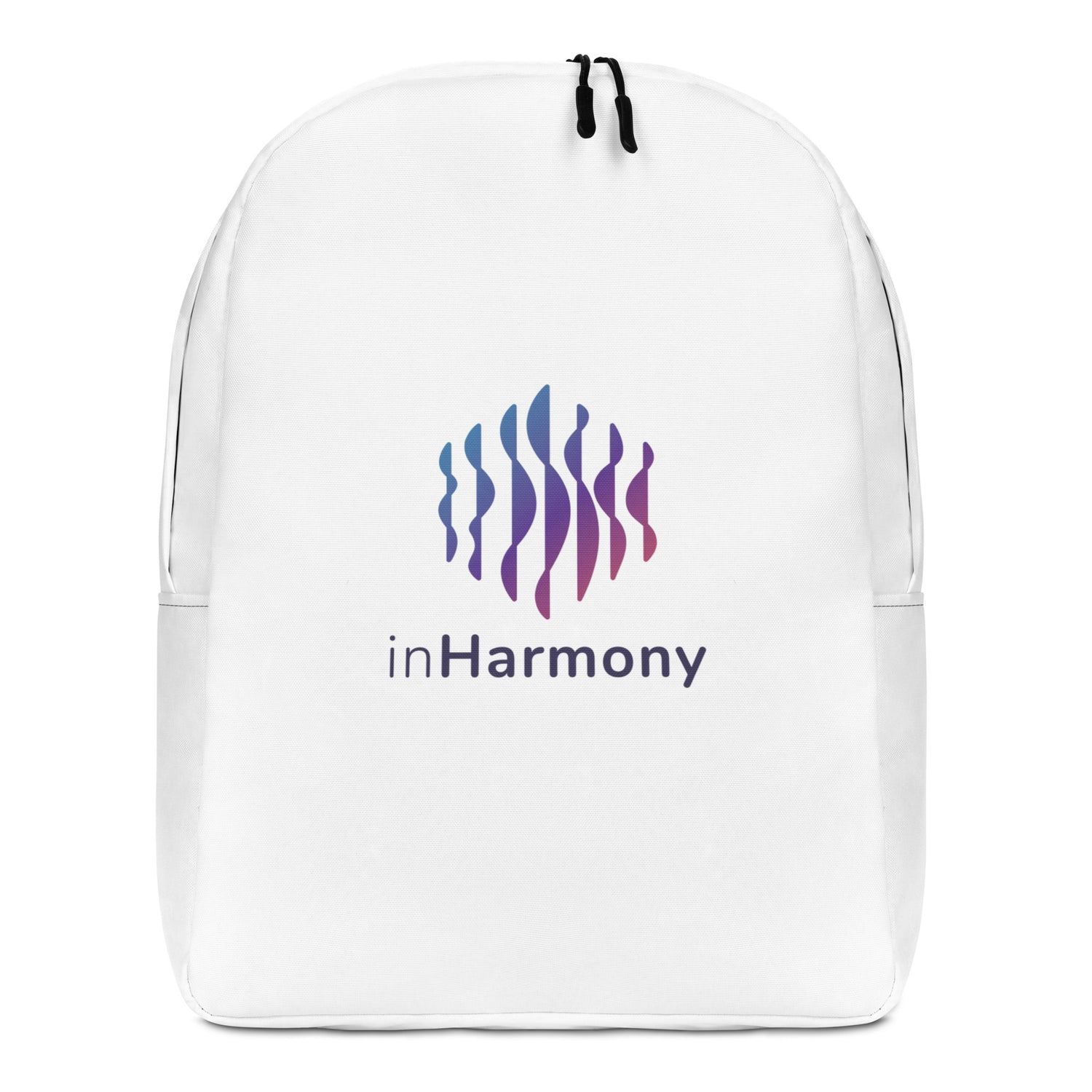Discover the benefits and techniques of vibroacoustic therapy in our comprehensive guide. Learn how this non-invasive therapy can improve your well-being.
The Science Behind Vibroacoustic Therapy
To understand the remarkable benefits of Vibroacoustic Therapy, it's essential to delve into the science behind this innovative treatment. According to an article published in the Journal of Music Therapy, vibroacoustic therapy works by using specific frequency sound waves to stimulate the body's natural healing mechanisms. These sound waves are delivered through the inHarmony Sound Lounge, Practitioner, or Meditation Cushion. The relaxation furniture is designed to provide both auditory and tactile stimulation. As the vibrations penetrate the body, they trigger a cascade of physiological responses, including a reduction in stress hormones, an increase in serotonin and endorphin levels, and improved blood flow.The Connection between Sound and Health
Research dating back to the 1960s has linked sound therapy to good health. Sound can have a positive impact on our health in several ways. One of the most well-known benefits of sound is its ability to calm and relax our mind and body. Calming sounds, such as the music meditations in the inHarmony: Music Meditations App, have been shown to reduce stress and anxiety, lower blood pressure and heart rate, and promote relaxation. In addition to its calming effects, sound can also be used to improve our mood and enhance our cognitive abilities. Certain types of music, for example, have been shown to increase dopamine levels in the brain, which can improve mood and motivation. Other types of sound, such as white noise or pink noise, have been shown to improve cognitive performance by increasing focus and concentration.Who Can Benefit from Vibroacoustic Therapy?
Vibroacoustic therapy is effective in managing a variety of physical and mental health conditions. Here are some groups of people who can benefit from this therapy:
- Children and Adults: Vibroacoustic therapy is beneficial for both children and adults, even in those with autism and ADHD. Research has shown improvement in behavior and attention in children and adults after receiving vibroacoustic therapy.
- People with Chronic Pain: Chronic pain can be debilitating and negatively impact an individual's quality of life. Vibroacoustic therapy has been shown to reduce pain and improve mobility in people with chronic pain conditions such as fibromyalgia, arthritis, and back pain.
- Athletes and Active Individuals: Vibroacoustic therapy has been shown to improve the range of motion and reduce muscle soreness after strenuous exercise to reduce an athlete's downtime when impacted with injury or muscle soreness.
- People with Stress and Anxiety: Vibroacoustic therapy can help individuals manage stress and anxiety by promoting relaxation and reducing muscle tension.
- People with Sleep Disorders: Vibroacoustic therapy has been demonstrated to be a valuable resource for people experiencing sleep disorders like insomnia, sleep apnea, and restless leg syndrome.
- People with Specific Conditions: Vibroacoustic therapy is beneficial for individuals with specific health conditions such as Parkinson's disease, and multiple sclerosis. VAT has been shown to reduce pain, improve mood, and promote relaxation in individuals with these conditions.
Vibroacoustic Therapy Techniques
- Sonic Massage: Sonic massage is a technique that uses specialized handheld devices to deliver vibrations directly to specific areas of the body. The vibrations can help to release tension and promote relaxation in targeted areas.
- Sound Bath: A sound bath is a group therapy session that involves lying down and being immersed in the vibrations produced by various instruments, such as gongs, singing bowls, and tuning forks. The vibrations are thought to promote relaxation and calm the mind and body.
- Body Resonance: Body resonance is a technique that involves lying on a mat or platform equipped with transducers that deliver low-frequency vibrations to the body. These vibrations can help to stimulate circulation, reduce muscle tension, and promote relaxation.
- Tuning Fork Therapy: Tuning fork therapy involves using specialized tuning forks to deliver specific frequencies of sound vibrations to the body. The vibrations help balance the body's energy and allow your mind and body to achieve a calm and relaxed state.
- Singing Bowl Therapy: Singing bowl therapy involves using specialized bowls made of metal or crystal to produce sound vibrations. The bowls are played using a mallet, and the vibrations are thought to help promote relaxation.
- Gong Therapy: Gong therapy involves using a large gong to produce sound vibrations that can penetrate deep into the body.
- Brain Entrainment: Brain entrainment involves using specialized audio equipment to deliver specific frequencies of sound to the brain. The sound vibrations can help to synchronize brainwave patterns and promote relaxation.
Vibroacoustic Therapy Equipment
inHarmony Meditation Cushion: The inHarmony Meditation Cushion is a compact and portable vibroacoustic chair designed for use at home or on the go. It features a small cushion with built-in speakers and transducers that deliver low-frequency vibrations throughout the body. Users can connect their phone or device to customize their experience with a music meditation from the inHarmony: Music Meditations App or pair it with any music of their choosing. Watch this video to learn more about inHarmony Meditation Cushion | Introducing the inHarmony Meditation Cushion | Learn how to set up the inHarmony Meditation Cushion | How to setup and use your inHarmony Meditation Cushion
The inHarmony Meditation Cushion is an excellent option for those seeking a convenient and effective VAT solution that can be used anywhere. Shop for inHarmony Meditation Cushion
How to Choose a Vibroacoustic Therapy Provider
When you Google, “vibroacoustic therapy near me”, you will see many centers that offer sound and vibration therapy, but you need to understand not all vibroacoustic therapy providers are created equal. When choosing a vibroacoustic therapy provider, it's important to do your research to ensure that you receive safe and effective treatment.Questions to Ask Before Choosing a Provider
Before choosing a provider, it's essential to ask the right questions to ensure that you're receiving quality care. Some of the questions you may want to ask include:- What type of vibroacoustic therapy do you offer?
- What are the qualifications of the therapist providing the treatment?
- How many years of experience do you have with vibroacoustic therapy?
- Do you have any certifications or licenses related to vibroacoustic therapy?
- What are the potential risks and side effects of the treatment?
- What is the cost of the treatment, and does insurance cover it?
How to Evaluate a Provider's Credentials
When choosing a vibroacoustic therapy provider, it's crucial to evaluate their credentials. Look for providers who have completed specialized training and certification in vibroacoustic therapy. You may also want to consider their education and experience in related fields such as massage therapy, physical therapy, or chiropractic care.How to Choose the Right Type of Vibroacoustic Therapy
There are different types of vibroacoustic therapy available, and the right one for you depends on your specific needs and goals. Some providers may offer sound massage, where a therapist uses a specialized table with built-in speakers to deliver the sound and vibration therapy. Others may use handheld devices or wearables that can be used on specific areas of the body. It's important to discuss your goals with your provider to determine the best type of vibroacoustic therapy for you. They can help you choose a treatment plan that is safe, effective, and tailored to your individual needs.What to Expect During a Vibroacoustic Therapy Session
If you're considering trying vibroacoustic therapy, you may be wondering what to expect during a session. Here's a general idea of what typically happens:- Preparation: Before the session begins, your provider will typically ask you to remove your shoes and lie down on a mat or table. They may also provide you with headphones or earbuds to listen to music or other sounds during the session.
- Vibroacoustic Stimulation: Once you're settled, your provider will turn on the VAT device. This will cause the mat or table to vibrate, creating a sensation similar to a massage. The vibrations may be synchronized with the music or sound you're listening to, or they may be set to a specific frequency that's thought to be therapeutic.
- Relaxation: As the session progresses, you may begin to feel more relaxed and less stressed. Some people report feeling a sense of calm or even falling asleep during the session.
- End of session: Once the session is over, your provider will turn off the VAT device and give you some time to rest and relax before getting up. They may also provide you with water or other refreshments.
Final Thoughts
Vibroacoustic therapy is a promising form of therapy that combines sound and vibration to promote relaxation, reduce stress, and improve overall well-being. It is effective in managing conditions such as pain, anxiety, and sleep disorders, and can be used in a variety of settings including hospitals, clinics, spas, and at home for personal use. While more research is needed to fully understand the benefits and mechanisms of vibroacoustic therapy, it is a non-invasive and low-risk form of therapy that may be a valuable addition to one's health care regimen.
If you're interested in experiencing the power of vibroacoustic therapy for yourself, we encourage you to check out the inHarmony Sound Lounge, inHarmony Practitioner, and inHarmony Meditation Cushion. These innovative products are designed to provide a deeply centering mind-body experience using vibrotactile stimulation and vibroacoustic sound and can be used in a variety of settings to enhance your well-being. Shop now and start experiencing the benefits of vibroacoustic therapy today!
Frequently Asked Questions
1. What conditions can vibroacoustic therapy treat? Vibroacoustic therapy is effective in managing a range of conditions, including chronic pain, anxiety, depression, sleep disorders, and more. It works by using sound vibrations to stimulate the body and promote relaxation, which can help alleviate symptoms associated with these conditions.
2. Is vibroacoustic therapy safe for everyone? In general, vibroacoustic therapy is considered safe for most people. However, as with any therapy, some precautions should be taken. It is important to discuss any health concerns or conditions with a healthcare provider before starting vibroacoustic therapy. Additionally, pregnant women, individuals with pacemakers, and those with certain medical conditions may need to avoid vibroacoustic therapy.
3. How often should I do vibroacoustic therapy? The frequency of vibroacoustic therapy sessions can vary depending on the individual's specific needs and goals. Some people may benefit from weekly sessions, while others may only need occasional sessions for maintenance. It is important to work with a qualified healthcare provider to determine the appropriate frequency and duration of vibroacoustic therapy for your specific needs.












